Search
-
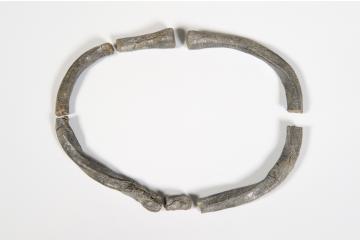 ©
NMAG
©
NMAG
Iron Age Torc
Lead torc worn around the neck of an Iron Age woman. Found during excavation of a rare human Iron Age burial.
Iron Age 800 BCE - 43 AD Geologic to Prehistoric
-
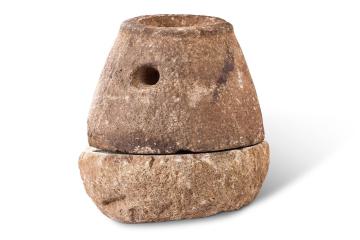 ©
NMAG
©
NMAG
Iron Age Rotary Quern
Rotary quern made from millstone grit used to grind cereals into flour. More than 100 were found at the Iron Age hillfort at Hunsbury Hill.
Iron Age c. 200 BCE Geologic to Prehistoric
-
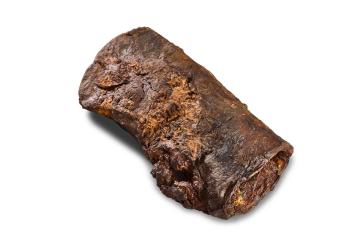 ©
NMAG
©
NMAG
Iron Age Axe Head
A socketed axe made by casting iron in a mould. It probably reflects the transition from bronze to iron metalworking in the early Iron Age.
Iron Age 800 - 43 CE Geologic to Prehistoric
-
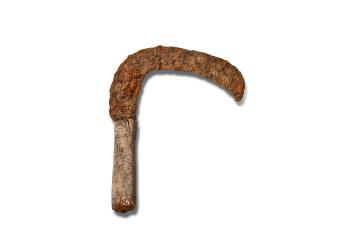 ©
NMAG
©
NMAG
Iron Age Reaping Hook
A well preserved reaping hook, on one hand an everyday farming implement, on the other a symbol of prehistoric farming.
Iron Age 300-150 BCE Geologic to Prehistoric
-
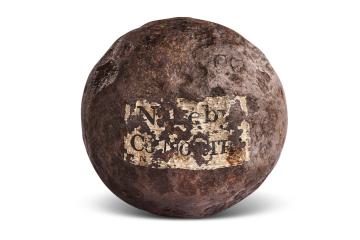 ©
NMAG
©
NMAG
Naseby Cannonball
Iron cannon ball fired at the Battle of Naseby in 1645, the deciding battle of the First English Civil war.
Stuart 1645 Stuart to Georgian
-
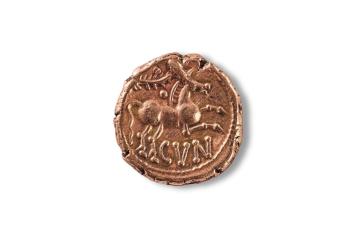 ©
NMAG
©
NMAG
Cunobelin Stater
A Celtic gold stater minted in the late Iron Age, bearing the name of Cunobelin, ruler of the Catuvellauni and Trinovantes tribes.
Iron Age 10 - 40 CE Geologic to Prehistoric
-
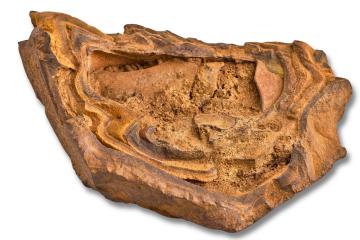 ©
NMAG
©
NMAG
Ironstone
Northamptonshire’s ironstone was formed from iron-rich sediments in the Jurassic period. Quarried since Roman times, ironstone has shaped our landscape, fuelled the county's industry and built our houses.
175 million years ago Geologic to Prehistoric
-
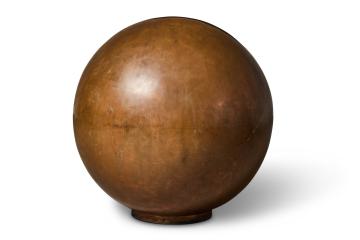 ©
NMAG
©
NMAG
Fountain Ball
This copper ball was added in the 1950s to the Victorian ornate cast iron fountain installed in the Market Square, Northampton.
Victorian 1863 Modern
-
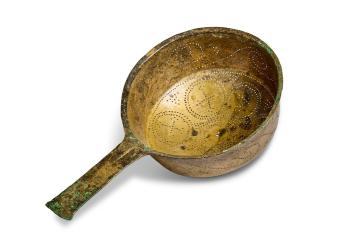 ©
NMAG
©
NMAG
Irchester Bowls
A collection of bronze vessels, known as the Irchester bowls, found in 1874 at the site of Irchester Roman town, near Wellingborough.
Roman 350 - 399 CE Roman and Early Medieval
-
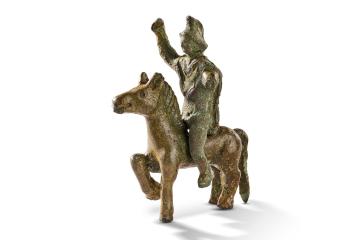 ©
NMAG
©
NMAG
Roman Horse and Rider Statuette
A bronze statuette of a horse and rider. This object is probably a votive or religious object left at the site of a Roman shrine.
200 - 399 CE Roman and Early Medieval
-
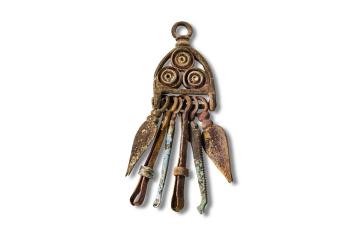 ©
NMAG
©
NMAG
Roman Chatelaine
This astonishingly well preserved example of a chatelaine (collection of personal grooming objects), is a high-status object made to be seen as much as used.
Roman - first century CE Roman and Early Medieval
-
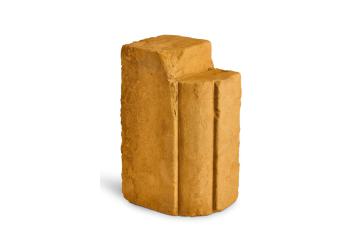 ©
NMAG
©
NMAG
Dressed Northamptonshire Sandstone
A small piece of sandstone quarried and dressed for use in the modern repairs to the 16th century Manor House in Great Doddington.
1999 Modern
